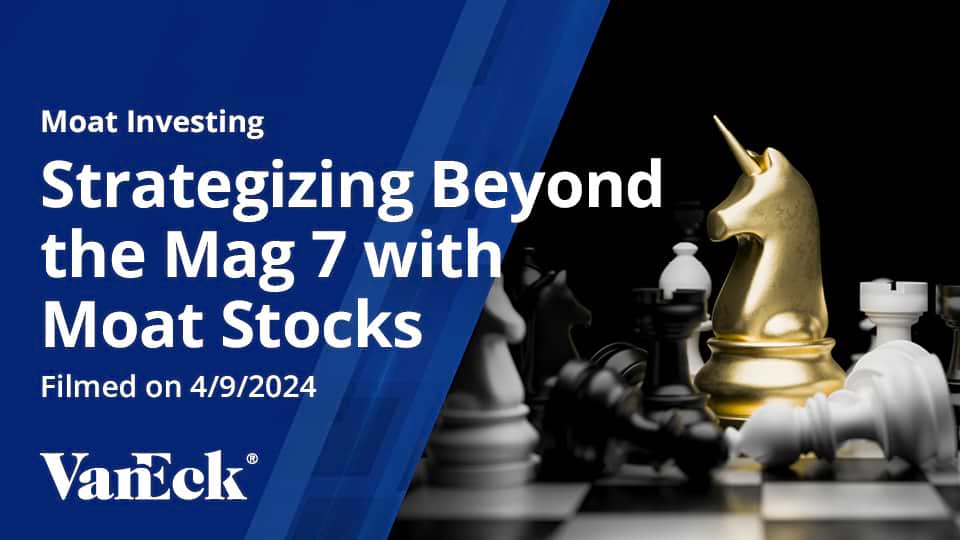SMOT ETF: Question & Answer
13 October 2022
Read Time 4 MIN
Small- and mid-cap (SMID-cap) stocks offer compelling return potential, but the lack of analyst coverage and research can lead to greater dispersion between a SMID-cap company’s stock price and fair value. Leveraging Morningstar’s equity research team, the VanEck Morningstar SMID Moat ETF (SMOT) provides focused exposure to SMID-cap stocks, targeting companies with long-term competitive advantages and attractive valuations. This blog is intended to address frequently asked questions about investing in SMID-cap stocks, Morningstar’s forward-looking research and SMOT.
- Why should investors consider investing in SMID-cap stocks?
- What are the risks associated with smaller market cap companies?
- What is the benefit of incorporating Morningstar’s equity research team?
- What kind of exposure does the Morningstar US Small-Mid Cap Moat Focus Index provide?
- How frequently does the Morningstar US Small-Mid Cap Moat Focus Index rebalance?
- How can SMOT fit within a portfolio?
Why should investors consider investing in SMID-cap stocks?
SMID caps have exhibited compelling characteristics relative to large-cap stocks in the past, but right now may be a particularly compelling time to focus on this asset class. Historically, SMID-cap stocks have provided greater return potential relative to large caps. Additionally, recent SMID-cap valuations have been at or near 20-year lows relative to large caps, making for an attractive entry point. The diversification of existing allocations may be another reason for consideration. SMID cap stocks offer differentiated sector exposures compared to many broad based large-cap indices. An allocation to SMID-cap stocks, which represent a sizable portion of the U.S. equity market but are often under allocated to, may result in better long-term performance potential and greater diversification, in our view.
What are the risks associated with smaller market cap companies?
Smaller companies are inherently subject to more risk than large cap companies, as they tend to have less diversified business models, limited access to capital and higher leverage, among other factors. These characteristics can lead to underperformance and higher volatility in periods of economic uncertainty and should be considered by investors. However, this elevated volatility can also create entry opportunities for investors to access the long-term growth potential of SMID-cap stocks. Additionally, less efficient information dissemination, as small- and mid-cap companies have considerably less analyst coverage and research than large-cap companies, can lead to additional risks.
What is the benefit of incorporating Morningstar’s equity research team?
SMOT seeks to track the Morningstar® US Small-Mid Cap Moat Focus IndexSM, which leverages Morningstar’s forward-looking, rigorous research process, driven by over 100 analysts globally. The Index applies much of the same core index methodology principles as Morningstar’s flagship Wide Moat Focus Index, but to a universe of small- and mid-cap companies. The Index targets SMID-cap companies with long-term competitive advantages, known as moats, and attractive valuations.
What kind of exposure does the Morningstar US Small-Mid Cap Moat Focus Index provide?
In terms of constituent count, the number of stocks included in the Index, historically, has averaged roughly 100. From a market-cap size category perspective, the Index tends to exhibit a bias toward mid-cap companies. Generally, mid-caps tend to receive more favorable moat ratings than small caps because they are often slightly more mature companies and more likely to have developed durable completive advantages. However, there are still many moat-rated small-cap companies, and exposure to these stocks has increased in periods of attractive relative valuations.
As for style exposure, the SMID Moat Index exhibits the same style agnostic exposure as Morningstar’s Wide Moat Focus Index. Its average exposure is generally a blend of value and growth; however, it can tilt more toward growth or value depending on valuation opportunities in the market.
The index methodology features minimal constraints, which has historically resulted in shifts of index sector exposure, as companies doing business in various segments of the market have become more or less attractively priced.
How frequently does the Morningstar US Small-Mid Cap Moat Focus Index rebalance?
The Index employs a staggered rebalance methodology whereby the Index is divided into two equally-weighted sub-portfolios, and each is reconstituted and rebalanced semi-annually on alternating quarters. Adjustments to one sub-portfolio are performed on the third Friday of March and September, and adjustments for the other sub-portfolio are performed on the third Friday of June and December. Due to the staggered rebalance methodology, Index constituents and weights may vary between sub-portfolios.
How can SMOT fit within a portfolio?
VanEck Morningstar SMID Moat ETF (SMOT) can be used as a long-term satellite position to U.S. core allocations, offering potential for greater long-term return. It can also be used as a vehicle to gain smaller-cap exposure for more short-term tactical allocations. Additionally, SMOT can add much desired diversification to a portfolio through its differentiated size and sector exposure versus large caps. SMOT can even be an option for those investors simply looking to reduce their exposure to the mega-cap concentration of broad market indices.
Regardless of the specific reason, investors seeking to make an allocation to SMID-cap companies should look for a strategy that does more than just provide broad-market exposure. We believe the focused approach of SMOT, that selectively identifies companies by considering competition and competitive advantages as well as valuations, may be a better choice.
Related Insights
This material may only be used outside of the United States.
This is not an offer to buy or sell, or a recommendation of any offer to buy or sell any of the securities mentioned herein. Fund holdings will vary. For a complete list of holdings in VanEck Mutual Funds and VanEck ETFs, please visit our website at www.vaneck.com.
The information presented does not involve the rendering of personalized investment, financial, legal, or tax advice. Certain statements contained herein may constitute projections, forecasts and other forward looking statements, which do not reflect actual results. Information provided by third-party sources are believed to be reliable and have not been independently verified for accuracy or completeness and cannot be guaranteed. Any opinions, projections, forecasts, and forward-looking statements presented herein are valid as of the date of this communication and are subject to change without notice. The information herein represents the opinion of the author(s), but not necessarily those of VanEck.
The views contained herein are not to be taken as advice or a recommendation to buy or sell any investment in any jurisdiction, nor is it a commitment from Van Eck Associates Corporation or its subsidiaries to participate in any transactions in any companies mentioned herein. This content is published in the United States. Investors are subject to securities and tax regulations within their applicable jurisdictions that are not addressed herein.
All investing is subject to risk, including the possible loss of the money you invest. As with any investment strategy, there is no guarantee that investment objectives will be met and investors may lose money. Diversification does not ensure a profit or protect against a loss in a declining market. Past performance is no guarantee of future results.
Related Insights
09 January 2024


